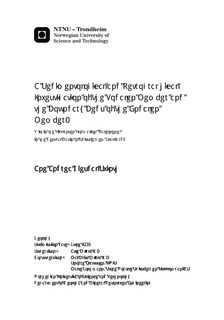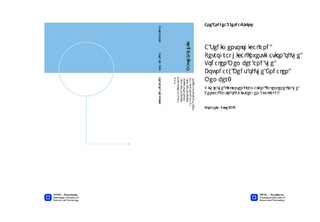| dc.contributor.advisor | Mørk, Atle | nb_NO |
| dc.contributor.advisor | Mørk, Mai Britt | nb_NO |
| dc.contributor.advisor | Olaussen, Snorre | nb_NO |
| dc.contributor.advisor | Jochmann, Malte | nb_NO |
| dc.contributor.author | Svinth, Ane Andrea Gjesdal | nb_NO |
| dc.date.accessioned | 2014-12-19T11:56:16Z | |
| dc.date.available | 2014-12-19T11:56:16Z | |
| dc.date.created | 2013-10-19 | nb_NO |
| dc.date.issued | 2013 | nb_NO |
| dc.identifier | 657472 | nb_NO |
| dc.identifier | ntnudaim:8416 | nb_NO |
| dc.identifier.uri | http://hdl.handle.net/11250/236199 | |
| dc.description.abstract | The Todalen and Endalen members (Firkanten Formation, Paleocene) comprise the earliest clastic sedimentary fill of the Central Basin on Spitsbergen, Svalbard. These two members represent delta plain- and delta front deposits respectively. Coal seams are abundant in the Todalen Member, and these are being mined on Svalbard today.The aim of this study was to carry out a sedimentological and petrographical investigation of the Todalen Member and the boundary beds of Endalen Member to interpret the deltaic environment in which they were deposited. Furthermore, it was also a goal to establish a provenance area for the sandstones and to point out the prevalent diagenetic processes taking place during the subsequent burial.Sedimentological logs and samples were obtained from two cores and two outcrops on the northeaster flank of the Central Basin during two field periods. Seven facies associations have been interpreted from the logged cores and outcrops. Facies association 1 - 6 are interpreted to represent a delta plain environment due to the presence of coal seams (mire deposits), tidal indicators, conglomerates and in-situ rootlets. Facies association 7 is interpreted to represent delta front (shoreface) deposits due alternating beds of Ophiomorpha burrowed- and hummocky cross-stratified sandstones. It is found that the delta plain deposits of the Todalen Member were under significant tidal influence, and becoming more distal towards the west. The upper half of the Todalen Member is found to have been under a larger fluvial influence than the lower half. The delta front (shoreface) deposits in the lower part of the Endalen Member also display more distal facies towards the west.Modal analysis was performed on the sampled sandstones, and the results from this revealed that all of the Todalen and Endalen member sandstones are similar in composition, typically constituted by subarkoses and quartz arenites, and sourced from areas north and northeast of the Central Basin. Only a small change in the detrital grain fraction is detected across the boundary to the Endalen Member. This is seen as an absence of spicular chert grains which represents a source rock fingerprint of the Tempelfjorden Group. This finding may indicate a small alteration of the source rock assembly across the Todalen - Endalen member boundary. Ferroan dolomite/ ankerite cement, as well as calcite cement, post-dated the quartz cement formation. The volume of carbonate cement is seen to decrease upwards in Todalen Member, which supports the interpretation of the upper half of the Todalen Member being more fluvial, as carbonate cement is a more common feature in sandstones deposited in an environment under marine influence. | nb_NO |
| dc.language | eng | nb_NO |
| dc.publisher | Institutt for geologi og bergteknikk | nb_NO |
| dc.title | A Sedimentological and Petrographical Investigation of the Todalen Member and the Boundary Beds of the Endalen Member.: Within the Firkanten Formation (Paleocene) in the Central Basin of Spitsbergen, Svalbard. | nb_NO |
| dc.type | Master thesis | nb_NO |
| dc.source.pagenumber | 163 | nb_NO |
| dc.contributor.department | Norges teknisk-naturvitenskapelige universitet, Fakultet for ingeniørvitenskap og teknologi, Institutt for geologi og bergteknikk | nb_NO |

